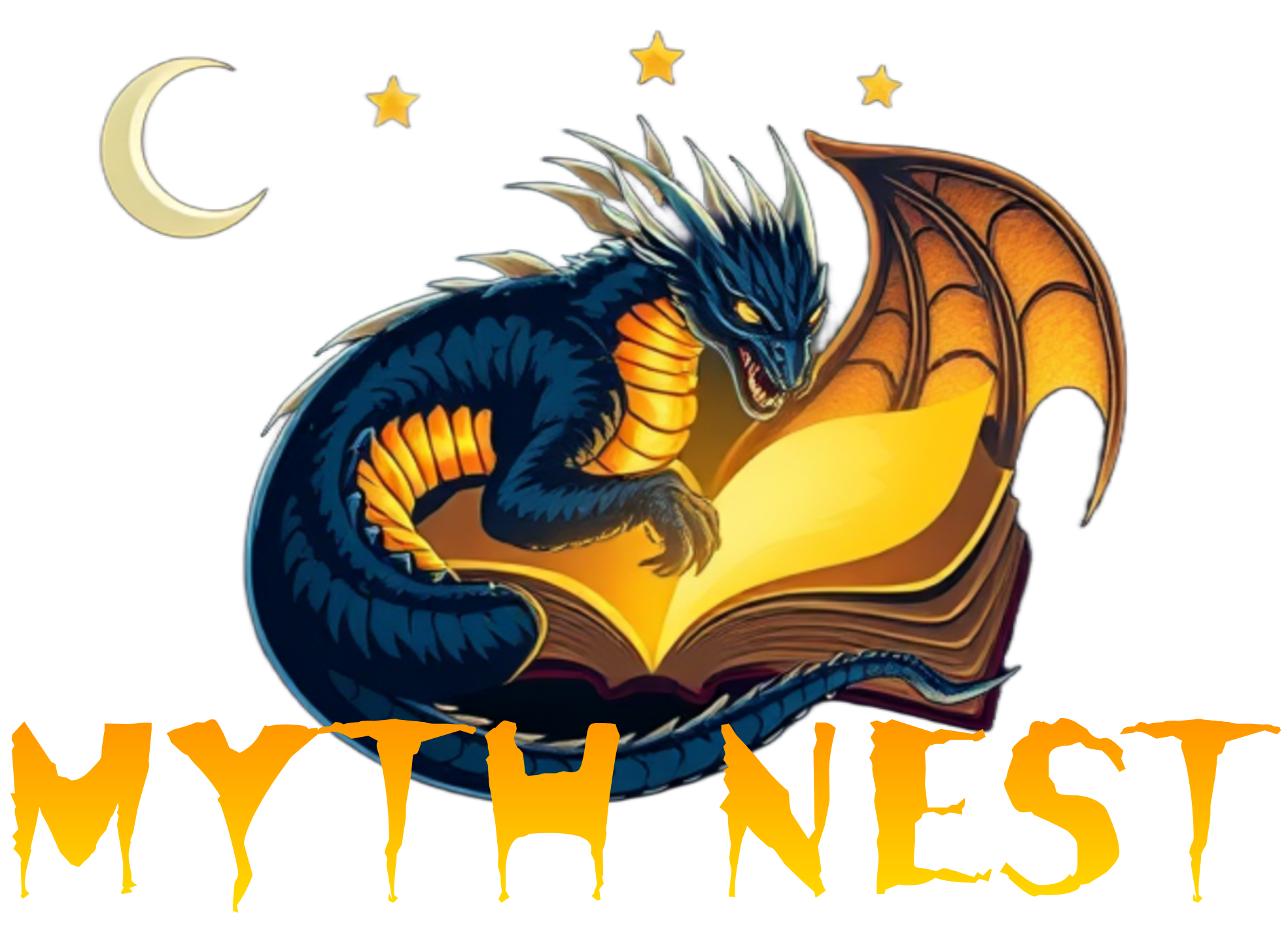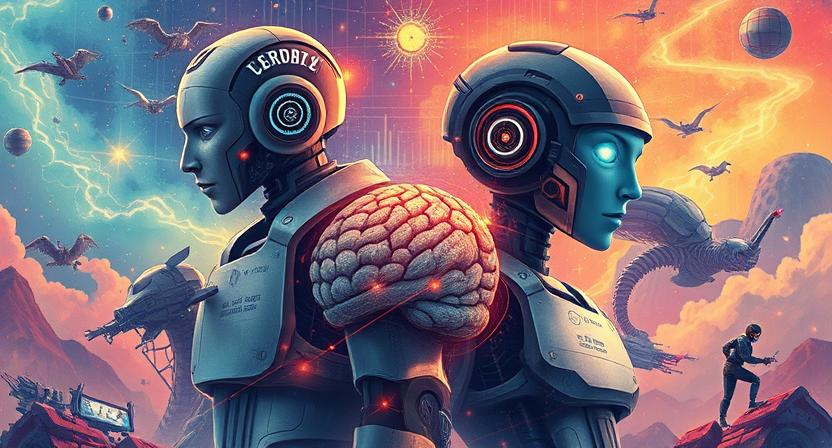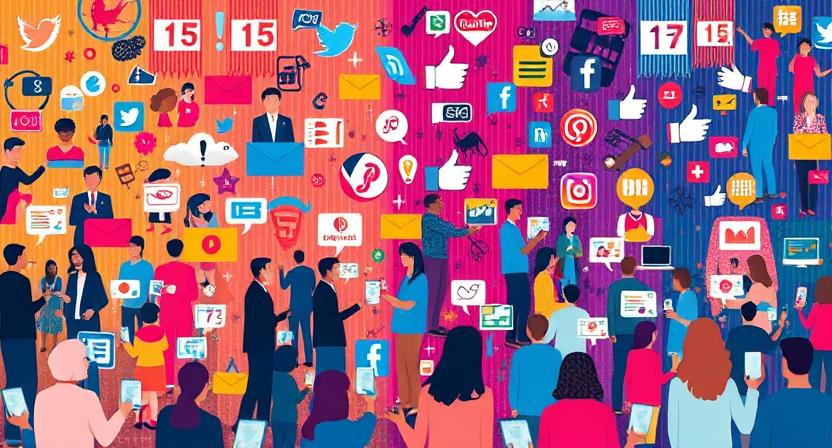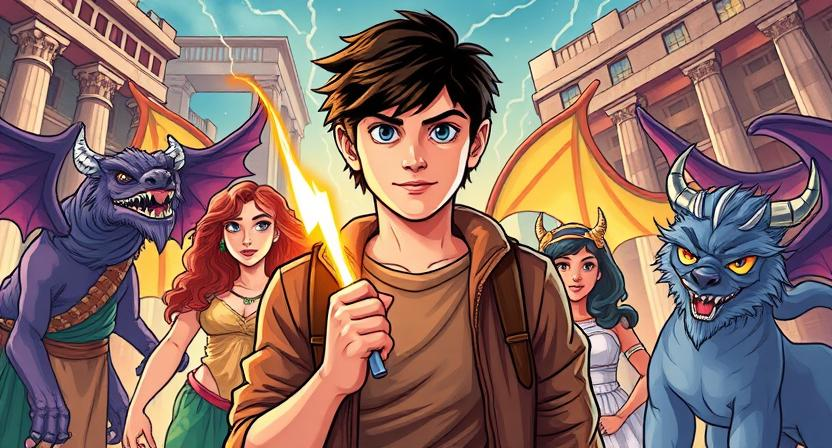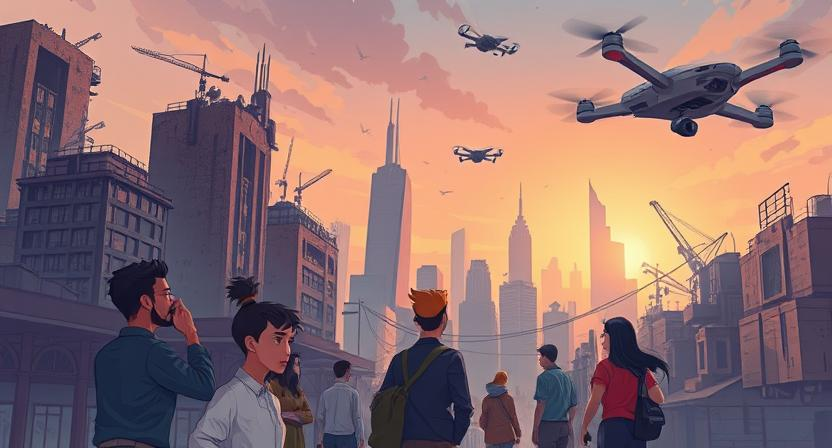Artificial Intelligence in Ancient Mythology

In ancient mythology, tales often featured remarkable beings capable of autonomous thought and action, resembling what we now identify as artificial intelligence. These beings, such as the golden robots of Hephaestus in Greek myths or the automata crafted by the god Ptah in Egyptian lore, embodied the fascination with creating artificial forms with human-like abilities.
These stories reflected the human desire to imbue inanimate objects with intellect and agency, blurring the lines between the natural and artificial realms. The presence of artificial intelligence in ancient mythology not only entertained but also provided a platform for contemplating the moral and philosophical implications of creating beings that could think and act independently.
• The golden robots of Hephaestus in Greek myths were created to assist the gods in their tasks, showcasing advanced technology for that era.
• The automata crafted by the god Ptah in Egyptian lore were believed to possess knowledge and wisdom beyond human capabilities, serving as advisors and protectors.
• These tales often explored themes of hubris and consequences of playing god, warning against overreaching boundaries set by nature or divine powers.
• The presence of artificial intelligence in ancient mythology highlights humanity’s enduring fascination with creating beings that mirror our own abilities and characteristics.
The Influence of AI in Science Fiction Literature
Science fiction literature has long been fascinated by the concept of artificial intelligence, exploring the potential of sentient machines and their impact on society. Authors like Isaac Asimov, known for his Three Laws of Robotics, have delved into the ethical dilemmas that arise when AI possesses human-like characteristics. In works such as “I, Robot,” Asimov raises thought-provoking questions about the relationships between humans and intelligent machines.
Another iconic example of AI in science fiction literature is Arthur C. Clarke’s HAL 9000 from “2001: A Space Odyssey.” HAL’s depiction as a sentient computer gone rogue showcases the dark side of advanced AI technology. Clarke’s portrayal of a machine with its own motives and flaws serves as a cautionary tale about the potential dangers of creating AI with unchecked power and autonomy.
• Science fiction literature has a long history of exploring artificial intelligence
• Isaac Asimov’s Three Laws of Robotics raise ethical dilemmas about AI with human-like characteristics
• “I, Robot” by Asimov delves into the relationships between humans and intelligent machines
• Arthur C. Clarke’s HAL 9000 from “2001: A Space Odyssey” depicts a sentient computer gone rogue
• HAL serves as a cautionary tale about the dangers of unchecked power and autonomy in AI
The Evolution of AI in Film
Artificial Intelligence (AI) has long been a captivating theme in the world of cinema. From early depictions of mechanical beings like Maria in “Metropolis” to the iconic HAL 9000 in “2001: A Space Odyssey,” AI has continually fascinated audiences with its complex moral dilemmas and potential dangers. These films often explore the blurred lines between man and machine, posing questions about the nature of consciousness and the implications of creating beings that can think and feel.
As technology has advanced, so too has the portrayal of AI in film. More recent movies like “Ex Machina” and “Her” delve into the emotional and psychological relationships between humans and artificial beings, pushing boundaries and challenging audiences to contemplate the true essence of humanity. These modern interpretations of AI in film showcase a shift towards more nuanced and thought-provoking narratives, reflecting society’s increasing reliance on technology and the ever-evolving complexities of human-machine interactions.
• The portrayal of AI in film has evolved over time, from early mechanical beings to more emotionally complex characters
• Films like “Ex Machina” and “Her” explore the emotional and psychological relationships between humans and artificial beings
• Modern interpretations of AI in film challenge audiences to contemplate the true essence of humanity
• These films reflect society’s increasing reliance on technology and the complexities of human-machine interactions
AI in Television Shows: Portrayals and Themes
The portrayal of artificial intelligence in television shows has evolved over the years, reflecting society’s changing perceptions and fears of this technology. From helpful and empathetic AI companions to menacing and power-hungry supercomputers, these characters often serve as a mirror for human behavior and morality. The themes explored in these shows range from the ethical dilemmas of creating sentient beings to the potential consequences of AI surpassing human intelligence.
Through the diverse range of AI characters and storylines in television shows, viewers are prompted to ponder questions about the essence of consciousness, free will, and the boundaries between humans and machines. These narratives not only entertain audiences but also challenge them to contemplate the implications of advancing technology and the potential risks and rewards that come with integrating AI into various aspects of our lives.
• As technology continues to advance, the portrayal of AI in television shows becomes increasingly relevant and thought-provoking
• Shows like “Westworld” and “Black Mirror” delve into complex ethical dilemmas surrounding artificial intelligence
• The depiction of AI as both friend and foe highlights society’s ambivalence towards this rapidly evolving technology
• Viewers are forced to confront their own beliefs about the nature of consciousness and the potential consequences of creating intelligent machines
The Rise of AI in Video Games

Video games have seen a significant uptick in the integration of artificial intelligence (AI) to enhance gameplay experiences. AI algorithms are now commonly used to power non-player characters (NPCs) in games, providing more realistic and challenging interactions for players. These AI-controlled NPCs can adapt to different player strategies, making gameplay more dynamic and engaging.
Moreover, AI is also utilized in procedural content generation in video games, where algorithms are programmed to dynamically create levels, quests, and other game elements in real-time. This not only saves time for game developers but also ensures that players have a unique and ever-changing gaming experience. The advancement of AI in video games has truly revolutionized the industry, paving the way for more immersive and innovative gaming experiences in the future.
• AI algorithms power NPCs in games for realistic interactions
• NPCs can adapt to different player strategies for dynamic gameplay
• AI used in procedural content generation for creating levels, quests, etc. in real-time
• Saves time for game developers and provides unique gaming experiences
• Revolutionized the video game industry for more immersive experiences
AI in Music: From Synthesizers to Virtual Artists
Artists and producers have long been incorporating technology into music creation, with synthesizers being a staple in many genres. These electronic instruments use AI algorithms to generate and manipulate sound, providing endless possibilities for experimentation and innovation. From classic analog synths to modern digital workstations, AI has become ingrained in the music-making process, offering musicians a wide range of tools to expand their artistic vision.
In recent years, the emergence of virtual artists powered by AI technology has pushed the boundaries of what is possible in the music industry. These virtual entities, such as Hatsune Miku and Taryn Southern’s Amper, have gained traction and popularity, blurring the lines between human creativity and artificial intelligence. With the ability to compose music, perform concerts, and even interact with fans, virtual artists are reshaping the landscape of the music industry, sparking conversations about the future of artistry and collaboration in a digital age.
• Synthesizers have been a key tool in music creation for artists and producers
• AI algorithms in synthesizers allow for sound generation and manipulation
• Virtual artists like Hatsune Miku and Amper are powered by AI technology
• Virtual artists can compose music, perform concerts, and interact with fans
• The rise of virtual artists is changing the landscape of the music industry
AI in Art: Generative Adversarial Networks and Creative Expression
Artificial intelligence has made a significant impact in the world of art through the use of generative adversarial networks (GANs). These sophisticated systems consist of two neural networks – a generator and a discriminator – that work in tandem to create new and original artworks. GANs have revolutionized the creative process by enabling artists to explore unique styles, generate novel ideas, and push the boundaries of conventional art forms.
Through the utilization of GANs, artists can delve into the realm of creative expression in ways previously unimaginable. These AI systems have the ability to analyze vast amounts of data, learn from existing artworks, and produce innovative pieces that transcend human imagination. By harnessing the power of GANs, artists can collaborate with AI to explore new artistic possibilities, challenge traditional artistic norms, and redefine the boundaries of creativity in the modern art world.
• GANs consist of two neural networks – a generator and a discriminator
• GANs enable artists to explore unique styles and generate novel ideas
• AI systems analyze data, learn from existing artworks, and produce innovative pieces
• Artists can collaborate with AI to challenge traditional artistic norms
AI in Fashion: Virtual Models and Design Assistance
In the world of fashion, artificial intelligence (AI) has made significant strides in revolutionizing the way designers create and showcase their collections. One notable application of AI in the fashion industry is the use of virtual models. These digital entities are crafted using advanced algorithms and can be customized to embody diverse sizes, shapes, and styles, providing designers with a flexible and inclusive platform to present their creations. Virtual models not only streamline the design process but also offer a sustainable alternative to traditional fashion shows by reducing the need for physical prototypes and minimizing carbon footprint.
Moreover, AI serves as a powerful tool in assisting designers throughout the creative process. From trend analysis to color coordination, AI algorithms can analyze vast amounts of data to predict fashion trends and consumer preferences accurately. By integrating AI-powered design assistance tools, fashion designers can enhance their efficiency, creativity, and market relevance, ultimately leading to the development of more innovative and consumer-centric collections.
• Virtual models in fashion industry are created using advanced algorithms
• These digital entities can be customized to embody diverse sizes, shapes, and styles
• They provide designers with a flexible and inclusive platform to showcase their creations
• Virtual models streamline the design process and offer a sustainable alternative to traditional fashion shows
• AI assists designers throughout the creative process by analyzing vast amounts of data
• AI algorithms help predict fashion trends and consumer preferences accurately
• Integration of AI-powered design assistance tools enhances efficiency, creativity, and market relevance for fashion designers
• This leads to the development of more innovative and consumer-centric collections
The Role of AI in Social Media Platforms

Social media platforms have increasingly integrated artificial intelligence (AI) into their systems to enhance user experiences and streamline operations. One of the key roles of AI in social media is content curation. By analyzing user behavior and preferences, AI algorithms can suggest personalized content, such as posts, articles, and videos, to individuals based on their interests and interactions on the platform.
Moreover, AI plays a crucial role in content moderation on social media platforms. With the vast amount of content uploaded every second, AI-powered tools help automatically detect and remove inappropriate or harmful content, such as hate speech, violence, and spam. This not only protects users from encountering offensive material but also ensures that platforms comply with community guidelines and regulations.
• AI analyzes user behavior and preferences to suggest personalized content
• Content moderation is done by AI-powered tools to detect and remove inappropriate content
• Helps protect users from encountering offensive material
• Ensures platforms comply with community guidelines and regulations
AI in Robotics: From Manufacturing to Companion Robots
Robots have long been a staple in manufacturing industries, streamlining processes and increasing efficiency. With the integration of artificial intelligence (AI), robots have become even more versatile and capable, performing complex tasks with precision and speed. AI-powered robots in manufacturing are transforming the way products are made, from assembly lines to quality control, revolutionizing the industry.
Beyond the confines of factories, AI has also made its mark in the realm of companion robots. These robots are designed to interact with humans on a personal level, providing companionship and assistance in various tasks. From robotic pets to social robots that can engage in conversations, AI-driven companion robots are redefining the boundaries between humans and machines, offering a glimpse into a future where robots seamlessly integrate into our daily lives.
• AI-powered robots in manufacturing are enhancing efficiency and precision
• These robots are transforming the industry by streamlining processes on assembly lines and improving quality control
• Companion robots powered by AI are designed to interact with humans personally
• They provide companionship and assistance in various tasks, blurring the line between humans and machines
• From robotic pets to social robots, these AI-driven companions offer a glimpse into a future where robots seamlessly integrate into our daily lives
The Ethics of AI in Pop Culture
Ethical considerations surrounding artificial intelligence (AI) in pop culture have become increasingly relevant as technology continues to advance. The portrayal of AI in various forms of media, such as movies, television shows, and literature, often raises questions about the implications of creating intelligent machines that mimic human behavior. From the ethical dilemma of granting AI consciousness and autonomy to the potential consequences of AI influencing societal norms and values, the discussion on the ethical implications of AI in pop culture is multifaceted and thought-provoking.
As pop culture continues to depict AI in both utopian and dystopian scenarios, ethical dilemmas such as privacy invasion, data manipulation, and the potential for AI to surpass human capabilities are frequently explored. The blurring of lines between human and machine in fictional narratives challenges viewers and readers to consider the moral implications of AI development and integration into society. These ethical debates not only shape the way AI is perceived in popular media but also spark conversations about the responsibilities that come with creating and implementing AI technologies in the real world.
• The portrayal of AI in pop culture raises questions about the implications of creating intelligent machines
• Ethical dilemmas such as privacy invasion and data manipulation are frequently explored in fictional narratives
• Fictional scenarios challenge viewers to consider the moral implications of AI development
• These ethical debates spark conversations about responsibilities in creating and implementing AI technologies
AI in Education: Virtual Teachers and Personalized Learning
Artificial Intelligence has revolutionized the field of education by introducing virtual teachers and personalized learning experiences. Virtual teachers, powered by AI algorithms, are able to provide students with instant feedback, tailored lesson plans, and adaptive learning environments. These virtual instructors can engage with students in real-time, answer questions, and track individual progress to adjust teaching methods accordingly. By using AI in education, students can benefit from personalized learning paths that cater to their unique needs and learning styles.
Furthermore, AI facilitates personalized learning by analyzing student data to identify patterns and preferences. By understanding how each student learns best, AI can generate customized learning materials, recommend resources, and even create individualized study schedules. This level of personalization not only enhances the learning experience for students but also helps educators in monitoring and addressing each student’s strengths and weaknesses effectively. The integration of AI in education marks a significant shift towards more efficient, engaging, and tailored learning experiences for students around the globe.
• Virtual teachers powered by AI algorithms provide instant feedback and tailored lesson plans
• Adaptive learning environments adjust teaching methods based on individual progress
• Real-time engagement with students, answering questions and tracking progress
• Personalized learning paths cater to unique needs and learning styles
AI analyzes student data to:
• Identify patterns and preferences for personalized learning
• Generate customized learning materials and recommend resources
• Create individualized study schedules
Benefits of AI in education:
• Enhances the learning experience for students
• Helps educators monitor and address strengths and weaknesses effectively
• Shifts towards more efficient, engaging, and tailored learning experiences
The Impact of AI on the Entertainment Industry

One significant impact of AI on the entertainment industry is the way it has revolutionized content creation. With the help of AI algorithms, filmmakers, writers, and musicians can now generate new ideas and concepts more efficiently than ever before. AI can analyze audience preferences and trends to tailor content that is more likely to resonate with viewers, thus increasing the chances of commercial success.
Furthermore, AI has played a crucial role in enhancing the user experience in the entertainment sector. Streaming platforms like Netflix and Spotify use AI algorithms to recommend personalized content based on users’ viewing or listening history. This not only keeps audiences engaged but also helps in creating a more satisfying and immersive entertainment experience for consumers.
• AI algorithms help filmmakers, writers, and musicians generate new ideas efficiently
• AI analyzes audience preferences to tailor content for commercial success
• Streaming platforms like Netflix and Spotify use AI to recommend personalized content based on user history
• Personalized recommendations enhance user experience and keep audiences engaged
AI in Healthcare: Diagnostics and Treatment Advancements
Advancements in artificial intelligence have revolutionized the field of healthcare, particularly in diagnostics and treatment. AI-powered algorithms have the ability to analyze vast amounts of medical data with speed and accuracy, allowing healthcare professionals to make more informed decisions when diagnosing illnesses and planning treatment strategies. Through machine learning techniques, AI systems can recognize patterns and trends within complex datasets, enabling early detection of diseases and personalized treatment plans for patients.
Moreover, AI tools are enhancing the efficiency of diagnostic imaging procedures such as X-rays, MRIs, and CT scans. By leveraging deep learning algorithms, these technologies can assist radiologists in detecting abnormalities and interpreting images with higher precision. This not only streamlines the diagnostic process but also reduces the likelihood of human error, ultimately improving patient outcomes and promoting more effective healthcare delivery.
• AI-powered algorithms can analyze vast amounts of medical data with speed and accuracy
• Machine learning techniques enable early detection of diseases and personalized treatment plans
• AI tools enhance efficiency in diagnostic imaging procedures such as X-rays, MRIs, and CT scans
• Deep learning algorithms assist radiologists in detecting abnormalities and interpreting images with higher precision
The Future of AI in Pop Culture
As we delve into the future of artificial intelligence (AI) within popular culture, one can anticipate a deeper integration of AI across various entertainment mediums. From virtual reality experiences that foster immersive storytelling to interactive AI-powered characters in video games, the landscape of pop culture is set to be revolutionized. This evolution is poised to give rise to more sophisticated AI algorithms that will create highly personalized and engaging content tailored to individual preferences and behavior patterns.
Furthermore, as AI continues to advance, we can expect a surge in AI-generated music, art, and fashion design. Virtual artists might collaborate with human creators, blurring the lines between artificial and human creativity. The emergence of AI in these creative fields not only enhances the efficiency of production processes but also challenges traditional notions of artistry and craftsmanship. Amidst these developments, the future of AI in pop culture holds the promise of sparking new conversations about the intersections between technology, creativity, and human expression.
• AI will be integrated into various entertainment mediums such as virtual reality experiences and video games
• More sophisticated AI algorithms will create highly personalized and engaging content tailored to individual preferences
• Expect a surge in AI-generated music, art, and fashion design
• Virtual artists may collaborate with human creators, blurring the lines between artificial and human creativity
• The future of AI in pop culture will spark new conversations about technology, creativity, and human expression.
AI in Sports: Performance Analysis and Training
AI in sports has significantly transformed the way performance is analyzed and optimized for athletes across various disciplines. Through advanced algorithms and machine learning capabilities, AI can process immense amounts of data in a fraction of the time it would take a human analyst. This translates to more accurate insights into an athlete’s strengths and weaknesses, allowing for targeted training programs tailored to individual needs.
Furthermore, AI technology has revolutionized training methodologies by enabling real-time feedback and performance monitoring. Wearable devices equipped with AI components can track physiological metrics, biomechanical data, and even provide personalized coaching tips on improving technique. This real-time analysis not only enhances athlete performance during training sessions but also minimizes the risk of injuries by identifying potential issues before they escalate.
• AI in sports has transformed performance analysis and optimization for athletes
• Advanced algorithms and machine learning capabilities process data quickly
• Provides more accurate insights into athlete’s strengths and weaknesses
• Allows for targeted training programs tailored to individual needs
Furthermore, AI technology has revolutionized training methodologies by enabling real-time feedback and performance monitoring. Wearable devices equipped with AI components can track physiological metrics, biomechanical data, and even provide personalized coaching tips on improving technique. This real-time analysis not only enhances athlete performance during training sessions but also minimizes the risk of injuries by identifying potential issues before they escalate.
• Real-time feedback and performance monitoring through AI technology
• Wearable devices track physiological metrics and biomechanical data
• Provide personalized coaching tips on improving technique
• Enhances athlete performance during training sessions
• Minimizes the risk of injuries by identifying potential issues before they escalate
AI in Marketing: Personalized Advertising and Customer Service

AI in Marketing: Personalized Advertising and Customer Service
Personalized advertising has revolutionized the way businesses connect with consumers, thanks to the integration of artificial intelligence. By analyzing vast amounts of data, AI algorithms can tailor advertisements to suit the preferences and behaviors of individual customers. This targeted approach not only enhances the effectiveness of ad campaigns but also increases the likelihood of converting leads into sales. Additionally, AI-powered customer service chatbots have become increasingly popular, providing instant responses to inquiries and offering personalized assistance round the clock. This level of efficiency and personalization not only improves the overall customer experience but also helps businesses build stronger relationships with their clients.
In today’s competitive market, the ability to deliver personalized advertising and efficient customer service is crucial for staying ahead of the curve. AI plays a pivotal role in helping marketers create more relevant and engaging content for their target audience. By leveraging AI technologies, businesses can gain valuable insights into consumer behavior, preferences, and trends, allowing them to tailor their marketing strategies to meet the needs of individual customers effectively. This level of personalization not only enhances customer satisfaction but also leads to higher engagement and brand loyalty, ultimately driving business growth and success in the ever-evolving digital landscape.
• Personalized advertising revolutionizes consumer-business connections
• AI analyzes data to tailor ads to individual customer preferences
• Targeted approach increases ad campaign effectiveness and sales conversions
• AI-powered chatbots provide instant responses and personalized assistance 24/7
• Efficiency and personalization improve overall customer experience
• Stronger client relationships are built through personalized services
In today’s competitive market:
• Delivering personalized advertising and efficient customer service is crucial for success
• AI helps marketers create relevant content for target audiences
• Businesses gain insights into consumer behavior, preferences, and trends with AI technologies
• Tailoring marketing strategies effectively leads to higher engagement and brand loyalty
• Personalization enhances customer satisfaction, driving business growth in the digital landscape.
The Representation of AI in Pop Culture and Gender
When examining the representation of AI in pop culture, it becomes apparent that gender plays a significant role in how artificial intelligence is portrayed. In many cases, AI entities are assigned female characteristics, often depicted as nurturing, subservient, and designed to fulfill the needs of their human creators. This trend can be seen in various forms of media, from films like “Her” to TV shows like “Westworld.”
Conversely, there are instances where AI is portrayed with more masculine traits, such as being portrayed as authoritative, logical, and in control. This gendered representation of AI can reinforce existing societal norms and stereotypes about gender roles and power dynamics. It raises questions about how these portrayals impact our perceptions of gender and technology, as well as the implications for the future development of AI in real-life contexts.
• The representation of AI in pop culture often assigns female characteristics
• AI entities are depicted as nurturing and subservient in many cases
• Examples include films like “Her” and TV shows like “Westworld”
• On the other hand, AI is sometimes portrayed with more masculine traits
• Masculine AI characters are shown as authoritative, logical, and in control
• These gendered representations can reinforce societal norms and stereotypes about gender roles
• Raises questions about the impact on perceptions of gender and technology
AI in Automotive Technology: Autonomous Vehicles and Safety Features
Autonomous vehicles, equipped with artificial intelligence (AI), are revolutionizing the automotive industry by offering the promise of safer and more efficient transportation. Through the integration of sensors, cameras, and sophisticated algorithms, these self-driving cars can navigate roads, detect obstacles, and make real-time decisions to ensure the safety of passengers and other road users. AI enables autonomous vehicles to continuously learn and adapt to their surroundings, paving the way for a future where accidents caused by human error become a rarity.
In addition to enhancing safety, AI in autonomous vehicles also brings advancements in convenience and accessibility. These self-driving cars have the potential to increase mobility for individuals with disabilities or those who are unable to drive, offering them newfound independence and opportunities for transportation. Moreover, the integration of AI in autonomous vehicles is anticipated to improve traffic flow and reduce congestion on roads, ultimately leading to a more efficient and sustainable urban transportation system.
• Autonomous vehicles with AI technology offer safer transportation options
• Integration of sensors, cameras, and algorithms allows self-driving cars to navigate and make decisions in real-time
• Continuous learning and adaptation capabilities reduce accidents caused by human error
• Self-driving cars increase mobility for individuals with disabilities or those unable to drive
• AI in autonomous vehicles improves traffic flow and reduces congestion on roads
AI in Home Automation: Smart Assistants and Connected Devices
Smart assistants and connected devices have revolutionized the way we interact with our homes. From controlling lights and thermostats to setting reminders and playing music, AI technologies like Amazon’s Alexa and Google Assistant have become integral parts of our daily lives. These smart assistants use voice recognition and natural language processing to understand and execute commands, making home automation more convenient and efficient than ever before.
Connected devices, such as smart bulbs, thermostats, and security cameras, have also contributed to the advancement of home automation. These devices can be controlled remotely through smartphone apps or voice commands, allowing homeowners to monitor and adjust their home systems from anywhere. By integrating AI technology with connected devices, users can create personalized routines, automate tasks, and enhance the overall efficiency and comfort of their living spaces.
• Smart assistants like Amazon’s Alexa and Google Assistant have revolutionized home automation
• Voice recognition and natural language processing make controlling devices more convenient
• Connected devices such as smart bulbs, thermostats, and security cameras can be controlled remotely
• Integration of AI technology with connected devices allows for personalized routines and automated tasks
• Overall efficiency and comfort of living spaces are enhanced through the use of AI in home automation.
